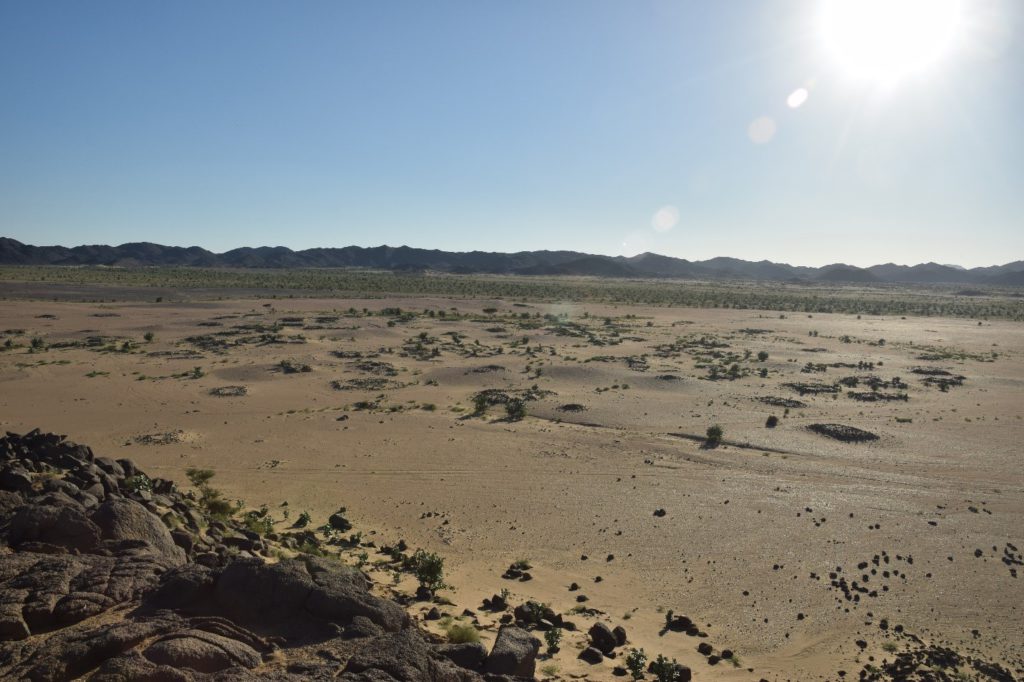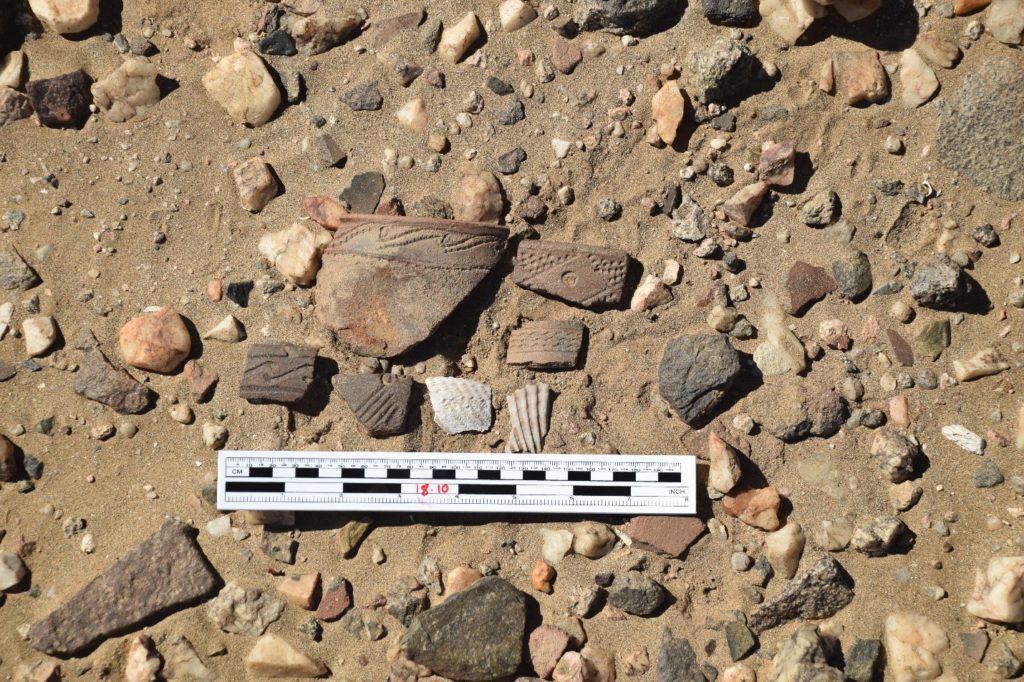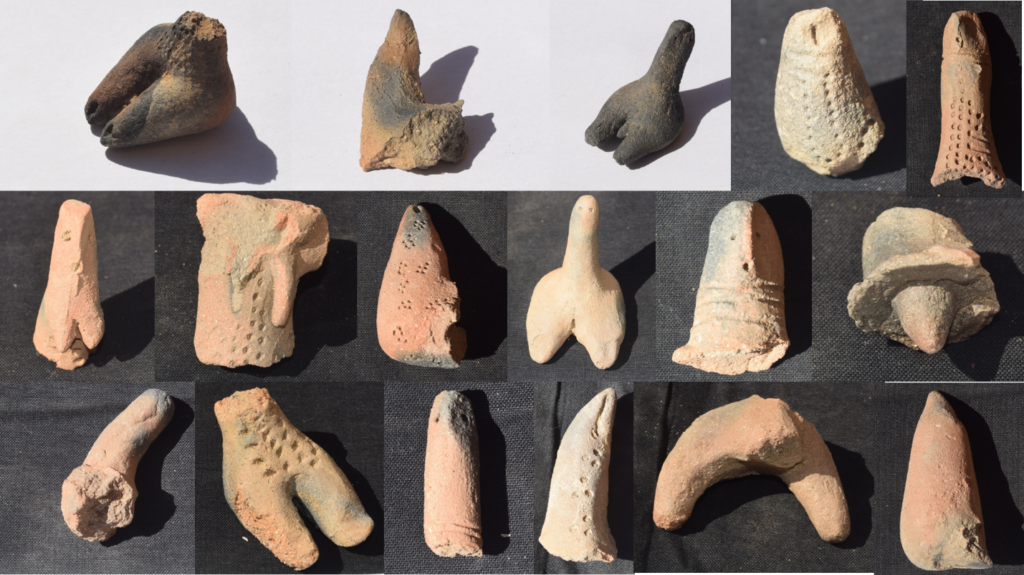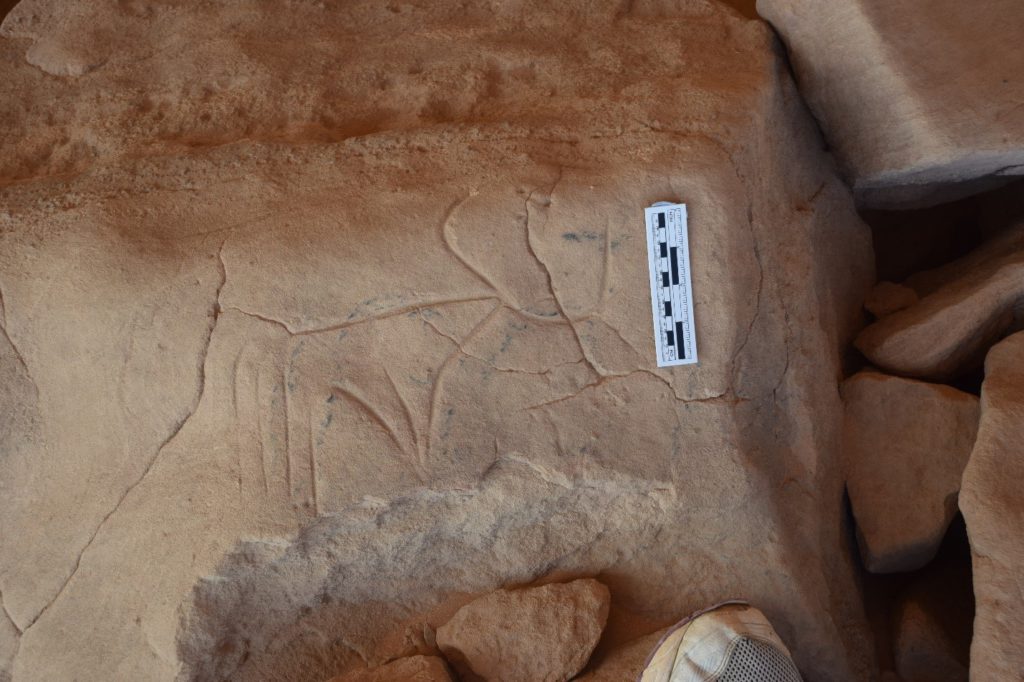In December 2018, an archaeological survey comprising of Sudanese, Australian, British, and Swiss researchers and led by former Nomadic Empires Research Associate Dr Julien Cooper, investigated the remote deserts of Eastern Sudan. The expedition discovered new rock art sites (c. 3500-3200 BCE) and recorded a Late Antique gold mine (c. 7th Century CE) belonging to the Blemmyes. The Eastern Desert of Sudan is a remote and largely unexplored region, and in antiquity was the abode of the nomadic pastoralists known as the Medjay, Blemmyes, or Beja.

The season recorded an ancient goldmine at the site known as Alitiatib where many sherds of the local nomadic culture were found (Figs 1 & 2). The site would seem to be a major Blemmyean settlement, and importantly indicates that this nomadic group controlled some goldmines in the interior desert. At the southern end of the settlement the expedition discovered a cemetery, scattered on the surface were a number of unique figurines (Fig. 3). These have been found at other Blemmyean sites, but their precise function remains unknown.

Two new rock art sites were documented in the deserts east of Nubian Nile, one a large tableaux depicting a ‘fleet’ of boats at the top of an isolated hill, and another a remote cave in the midst of a rocky pass depicting a hunting scene along with other fauna, including cattle, giraffes, goats, and dogs (Fig.4). The rock art sites both likely date to the late predynastic (c. 3500 BE) and possibly the early dynastic (c. 3000 BCE) periods. Boat petroglyphs of this nature are unique this far south and east, and this depiction may change our assessment of trade routes and foreign activity in this remote desert.


Acknowledgments: Dr Julien Cooper would like to thank colleagues in the Sudan, National Corporation of Antiquities and Museums, Drs Abdelrahman Ali, El-Hassan Ahmed, Mahmoud Soliman, and Hozaifa Abdelgamid for making the 2018 season possible and for their co-operation as well as the team members, Vivian Davies, Pierre Meyrat, Mubarak Adam and Osman Dafalla. The project was funded partly by the Wainwright Fund, The Egyptian Exploration Society, and Yale University.